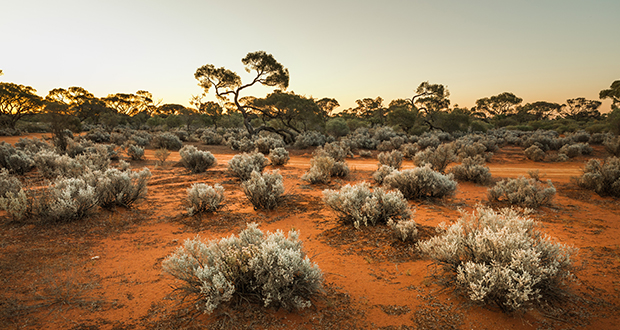As we celebrate The International Year of Indigenous Languages, it is encouraging to see the latest figures released by Victoria’s Education Department. They show an 8000 per cent improvement in the number of Victorian students studying an Aboriginal language* between 2011 and 2018, increasing from just 23 students in 2011 to 1867 last year. For academics like Susan Poetsch from the University of Sydney, such figures are indeed encouraging, as they are “a tribute to the communities who have been researching, learning and advocating for their languages for decades and the school systems that are supporting them”. She also points to other great stories that can be heard across Australia, each operating in specific ‘language ecologies’.
"In any particular place, there are different languages which are spoken to different extents on account of historical and present day social factors. A local configuration of languages can be called a 'language ecology'. This just means which languages are spoken, and how much, in a given area. Sometimes I call it the 'local langscape'," ANU researcher Denise Angelo explains.
In a forthcoming chapter for Babel. Journal of the Australian Federation of Modern Languages Teachers Associations, entitled ‘From the ground up: How Aboriginal languages teachers design school-based programs in their local language ecology’, Poetsch and co-author Angelo interview several Traditional Languages teachers from very different parts of Australia. Here we share three such success stories.
Carmel Ryan – Language ecology type A
Carmel Ryan is a Arrernte woman who teachers at Ltyentye Apurte in Central Australia, a remote community of roughly 500 people. As she explains:
"The main language we have here is Eastern Arrernte. We do have a few other languages through intermarriages and people moving here, like Luritja, Warlpiri, Western Arrernte, Pitjantjatajara. But most people are Eastern Arrernte. That’s the main language we hear spoken in the school and around the community."
Unlike the other Traditional Languages teachers interviewed for the chapter, Carmel teaches in a language ecology type A environment: in such environments the Traditional Language is the mother tongue of school-age students and language programs are concerned with maintenance and enrichment.
The language is well established in both community and educational contexts and planning and resource materials are fairly well developed. Not only does she have an Arrernte dictionary and picture book at her disposal, Carmel can access materials from her school’s Literature Production Centre (LPC). She and her assistant teacher also make a lot of the learning materials themselves, and regularly go on bush trips to teach students "traditional stories that convey rich ecological knowledge and social mores".
Although Arrernte language programs such as Carmel's are in the maintenance/enrichment stage, they still face challenges as "inter-generational transmission of Arrernte is fragile", partly owing to the "linguistically heterogeneous population" living in and around Alice Springs.
The importance of the language to the students’ and school’s identity, therefore, cannot be understated. As Carmel explains:
"The Arrernte program is very important for the school, the community, especially for the children to keep their language and culture strong, to speak strongly, know their culture, skin names, family and Country connections, and all about the things that are out bush. Otherwise they will just lose it completely. It’s important for their identity. Me and the assistant teachers all need to teach the kids more and more each day, making it stronger."
Marmingee Hand – Language ecology type B
Marmingee Hand is a Walmajarri speaker, who works on Bunuba County in Fitzroy Crossing, Western Australia. She teaches her own language and supports other Aboriginal teachers to run the school’s Aboriginal Languages Program, which currently teaches three Traditional Languages. The Kimberley town has a population of about 1200 and fits into language ecology type B.
According to Angelo, language ecology type B environments include those where the "Traditional Language is spoken fully by older people but not by school-aged students because the community has shifted to speaking New Language. School language programs involve revitalisation (with older full speakers training up younger people)."
The majority of people speak Kimberley Kriol in the area, a regional dialect of Kriol, the mother tongue for Aboriginal school-aged students. That said, families in the area derive their identity from several Traditional Languages such as Walmajarri, Bunuba, Gooniyandi, Nyikana and Wangkatjungka. This confluence of Traditional Languages stems from “the movement of Aboriginal peoples in and around Fitzroy Crossing … due to the establishment of … the town … pastoral stations, missions and reserves”. Kriol was then widely introduced to the area in the 1950s.
Although the school’s Aboriginal Languages Program has had a rich history, Marmingee reflects on the difficulty in planning and running such a program:
“I think it was because it was in the too hard basket […] because people didn’t greatly understand what you needed to do in in order for you to coordinate a language program which ran 4 courses.”
She also shares some of the emotions attached to beginning language courses in the mother tongue, Kriol:
“[…] people still have got this feeling about Kriol – it’s not seen as language in its own right, they think it’s still a rubbish sort of language […] So I used Kriol as a way to communicate with our kids, acknowledging them, because that’s their first language.”
Despite the challenges, Marmingee, like Carmel, is witnessing great benefits in the Aboriginal Languages Program.
“I think it’s making them aware of who they are, where they’re from. It’s also the history behind things, how Fitzroy came to be. And they also know the history of the languages as well, so it’s also making them connected to Country and the kinship system as well. So all those kids are – from what I’ve seen – really proud.”
Michael Jarrett – Language ecology type C
Michael Jarrett teaches at the Gumbaynggirr Language and Culture Nest in Gumbaynggirr country on the mid-north coast of NSW. It is one of five ‘nests’ established by the NSW government to support the learning and speaking of Aboriginal languages across the state. Michael teaches in a language ecology type C environment: he, like other adults in the community, has been “relearning his language as an additional language, in a revival context”.
In these language ecologies "the Traditional Language is being reawakened (researched and relearned) because the community speaks New Language or English. School language programs are revival (with community members learning and teaching)," Angelo says.
Having grown up on an Aboriginal reserve, Michael spoke English and rarely heard Gumbaynggirr; it was not until the 1990s that he committed to learning his language.
Learning materials for teaching Gumbaynggirr have been sourced by the community, with many accessing historical materials and seeking advice from elders. Like all Traditional Languages endeavours, Michael stresses the importance of planning being a “community endeavour”:
“So what we do, we come together and try to bring everyone. I really try to bring everyone together and say we all want one thing. We all want Gunbaynggirr language. We’ve got different ideas, we’ve got our different ways, but one main thing is, that we focus on, is to teach our children and our people and anyone else, our Gumbaynggirr language and that’s how I work with that community.”
The revitalisation of Gunbaynggirr in the area has been a success story, with Michael saying:
"It’s more than we could ever imagine – because from coming to nearly extinction and no one speaking, language is now being taught in schools and being spoken in the community. So that’s a plus!”
The importance of the revival is “multilayered” for Michael.
“The old people, my ancestors. That’s one [reason]. And the old people who started the revitalisation up. It’s important for me as a Gumbaynggirr person, my children, the community, the land. To learn our language again and teach our ;language – it would be shame to let this language die because it’s such a beautiful language.”
As these intimate and though-provoking case studies show, successful Traditional Languages programs are occurring all over the country. Due to the different language ecologies in which they operate, however, success is measured in very different ways, and all face different challenges in delivering their programs. What comes through in these stories most of all is how researching, speaking and teaching their languages has reinvigorated their communities’ sense of culture, history and connection to Country.
* 'Aboriginal language' is the term used in The Age. For the purposes of this article, 'Traditional Languages' refer to languages attached to specific peoples and Country.
Do you have an idea for a story?Email [email protected]
 Campus Review The latest in higher education news
Campus Review The latest in higher education news

